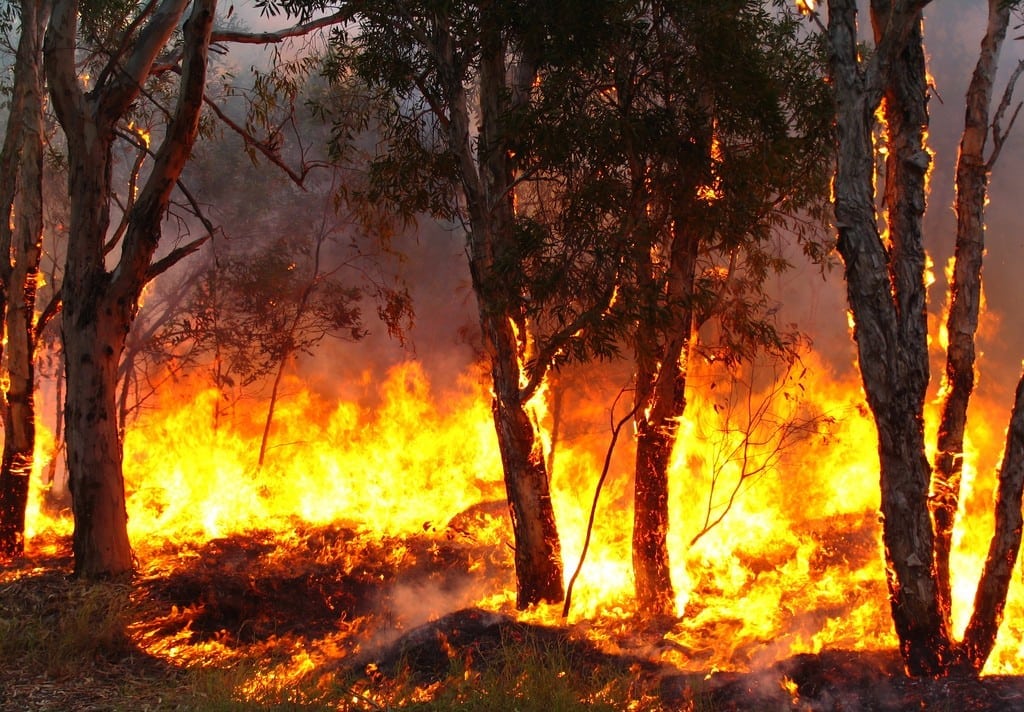WA BAL Report stresses the importance of having a BAL Assessment Report conducted on your property to determine the measures required to be implemented to protect your home and safeguard it from bushfires. In addition, WA BAL Report would like to share other information and advice on actions you can take to reduce the risk and avoid property damage and destruction and, most importantly, survive a bushfire.
Understand what fire needs
Fires have three features – fuel, oxygen and heat. Australia is plentiful with vegetation that provide fuel for fire, including long dry grass, parched native shrubs, leaves and twigs. Fire prevention measures are based on reducing the fuels by controlled burning before the fire season, mowing, slashing and creating firebreaks.
Fires generate great heat, including heat called radiant heat which spreads the fire by drying out vegetation so it will burn. Radiant heat, while deadly, can be deflected by a solid barrier such as a hedge, wall or building. The safest place in a bushfire is inside a building, at least 20 metres away from the radiant heat. It also helps to close off areas where sparks might lodge.
Fires require oxygen to keep burning. Strong winds are extremely detrimental as they force the fire along and increase air circulation, providing more oxygen. Any measures that reduce wind speed will reduce the intensity of the fire and, ironically, trees can provide effective shelter for your house from the wind.
Take steps to protect your home
Reduce the fuel available for fires by maintaining a minimum 2-metre gap with no trees overhanging the house, cutting long grass, raking up leaves and twigs, pruning lower branches and creating a mineral earth firebreak.
Protect your home with a minimum 20-metre radius by building a solid wall or fence from non-flammable material, planting trees and shrubs as a buffer between the bush and your house, and locate any vegetable garden, lawn, pool or patio on the side of the house likely to face a fire.
Ensure fire traps are cleared away. These include woodheaps (ensure they are not piled near or against the house), fuel containers, rubbish and timber, overhanging trees, leaves and twigs.
Stockpile water supplies in the event that mains water and power supplies are cut off. A water tank, connected with a petrol or diesel pump or generator and electric pressure pump, provide water pressure for hoses.
Naturally, your home should be constructed to the appropriate building construction standard, taking into consideration Australian Standard 3959. WA BAL Report can assist you in determining your requirements.
Decide whether to stay and defend or leave early
It is important to determine whether you are prepared to stay and defend your property, or leave early if the home is at risk of bushfire attack. This is a difficult question for many people as the family home is of great significance, but so are concerns for survival. Staying with a well prepared house may be safer than attempting to get away on roads blocked by smoke and fire.
You may prefer to stay if you are confident your home is well prepared for the fire, you have sufficient emergency water supplies and equipment, you feel you and your family could deal with the pressure of the fire and you and your family are in good health.
You may consider going if you are not confident about the fire safety of the house, you are worried about young children or elderly or sick people, you know it is safe to leave, you have a firm destination and you know which access roads are open or affected by fire.
If you decide to go, ensure you go early this would be safer than making your way through roads blocked by emergency vehicles, smoke and debris. Listen to the local radio’s local bush fire warning system, dress in protective clothing (cotton or woollen long trousers and shirts and strong shoes or boots), take water and an emergency kit with you, keep windows up and air conditioners off and drive slowly and carefully.
If you decide to stay and defend, ensure that you are well prepared, dress in protective clothes and bring children and pets inside. Close all doors and windows, bring outdoor furniture inside, keep sprinklers on, fill basins, sinks and baths with water and soak towels and rugs in water to lay along the doorways to keep sparks out. As the fire approaches, turn off mains electricity and gas supply, and keep checking the house for spot fires and put them out. Always ensure you have prepared a refuge in the interior of your house, such as in the laundry. It is also a good idea to park the car in a cleared area facing the direction of escape and with the keys in as a potential back up plan.
Additional measures include ensuring you know the most effective way to put out fires, how to deal with smoke inhalation and basic first aid. In the case of an emergency, call 000 who will be able to render assistance.
For more information
WA BAL Report are accredited Level 1 BAL Assessors and are experts at conducting Bushfire Attack Level Assessment Reports and bushfire prevention in general in Perth and Western Australia. For more information, contact our friendly staff on 08 6114 9356 or at admin@wabalreport.com.au.
Thank you for visiting www.wabalreport.com.au


5 thoughts on “How to survive a bushfire”